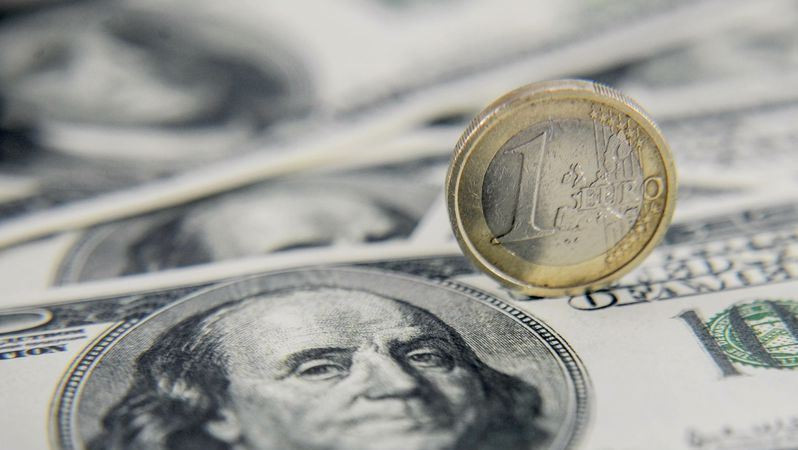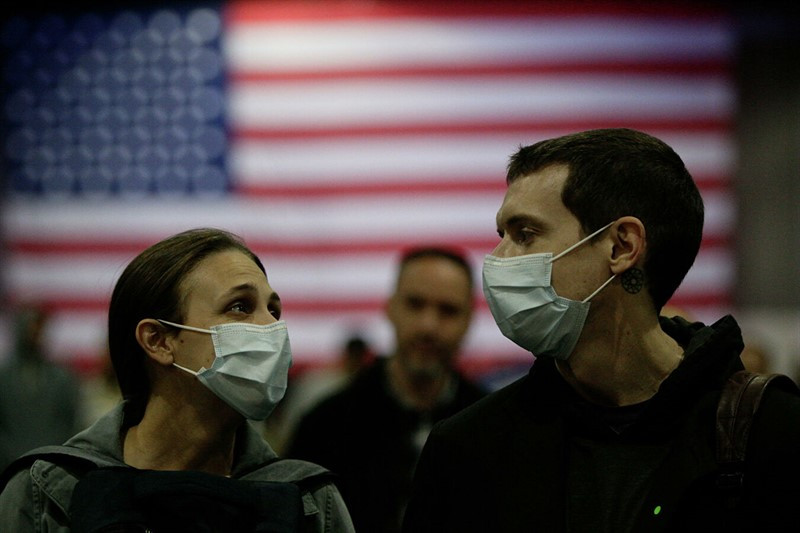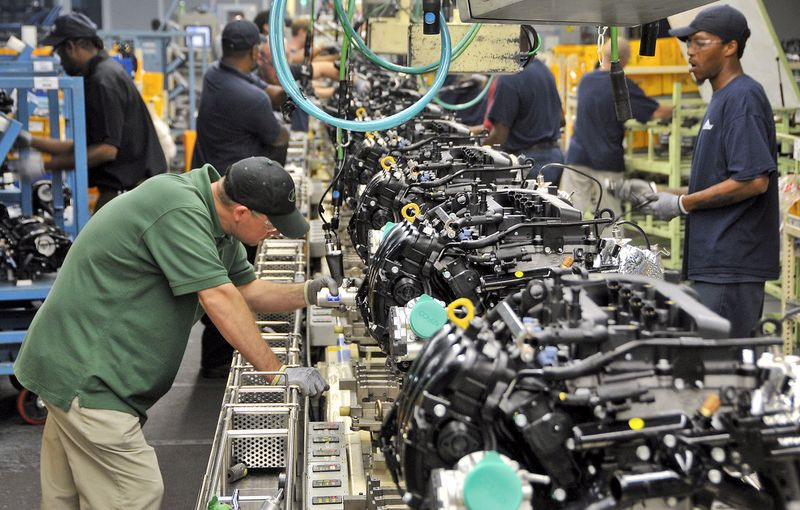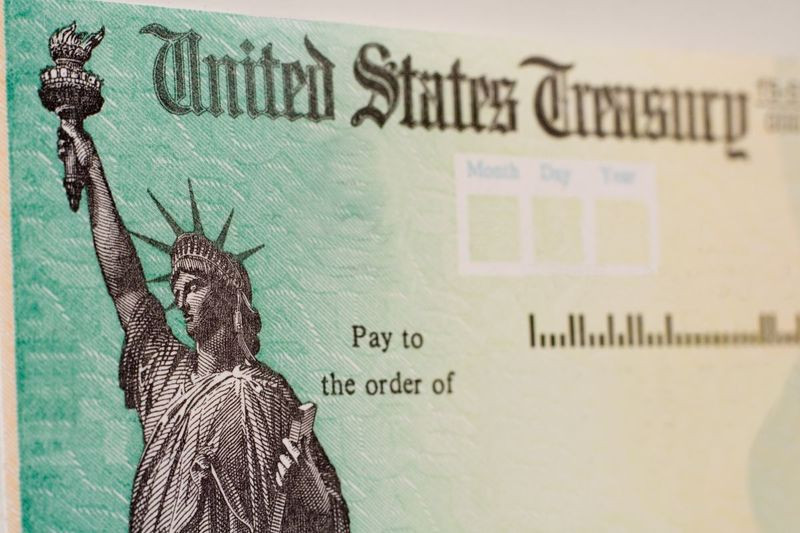
Following the results of Friday's trading, the S&P 500 index fell by more than 0.8%, ending in the red for the fourth consecutive week.
Nevertheless, investors out of habit tend to expect the so-called "Santa Claus rally".
The data show that since 1928, in 74% of cases, the S&P 500 index showed positive dynamics in December, more often than in any other month.
Despite such favorable chances, this does not mean that stocks are immune to a significant sell-off, say Bank of America strategists, who draw an analogy with December 2018, when the S&P 500 sank by 7.6% due to the tightening of Federal Reserve policy and concerns about economic growth.
"This year, similar concerns are emerging again and could derail any stock rally at the end of the year. In particular, any strengthening of COVID-19 can exacerbate the problem of supply chain disruption. Another risk that could slow the recovery is a hit to consumption caused by inflation, especially as fiscal and monetary stimulus expires," the bank's analysts said.
Still, little is known about the new strain of the coronavirus "Omicron", which has already been detected in about 1/3 of the states in the United States.
According to the chief American health expert Anthony Fauci, the new variant of COVID-19 may not be as scary as it is painted.
According to the World Health Organization (WHO), not a single fatal case has been recorded in the world as a result of infection with a new strain of coronavirus. At the same time, WHO representatives emphasize that it will take several more weeks to study the new strain in order to definitively determine its ability to cause a severe course of the disease.
Goldman Sachs lowered its forecast for US GDP growth in 2021 from 4.2% to 3.8%, and in 2022 - from 3.3% to 2.9%. The bank believes that the spread of the COVID-19 Omicron strain will put moderate pressure on economic growth in the country.

"There are still no answers to many questions, but now we consider the most likely scenario to be a faster spread of the virus while preserving people's immunity to the severe course of the disease," said strategists at The Goldman Sachs.
Last week, Fed Chairman Jerome Powell, during his speech to Congress, said that accelerating the reduction of monthly bond purchases could be justified even in the face of a new strain of coronavirus.
Cleveland Fed President Loretta Mester and her colleagues Mary Daly from San Francisco and Rafael Bostic from Atlanta actively support the idea of speeding up this process.
On Friday, the head of the St. Louis Federal Reserve, James Bullard, said that the FOMC at upcoming meetings will probably want to consider the possibility of a faster curtailment of the asset repurchase program.
Recent comments by Fed officials signal that Powell and his colleagues are now more focused on curbing inflation than on reducing unemployment, Bank of America analysts believe.
In their opinion, the change in the position of the Fed in combination with high valuations of stocks can create problems for investors.
"We remain cautious about the S&P 500 amid the aggressive tightening of the Fed's policy in an overvalued market," Bank of America noted.
Someone still prefers to bet on the Santa Claus rally. However, the rally as a result shows only the VIX volatility index – the so-called "fear indicator" on the stock market.
In such conditions, it seems most reasonable for investors to take profits at local highs.
There are fears that the financially struggling Chinese giant in the Evergande sphere will default, as the 30-day grace period for the payment ends on Monday.
In addition, if the US Congress does not raise the debt ceiling by December 21, the national government may not be able to fulfill its financial obligations. This will also put pressure on risky assets in the near future and will support a protective greenback.
The USD index is still holding near the multi-month peaks noted earlier in the area of 96.93.
Expectations that the United States will outperform most other developed countries in terms of raising the cost of borrowing allow the US currency to flex its muscles, and dollar bulls can count on continuing their march to the upside.
Meanwhile, the yawning gap in the rates of the US and European Central Banks hints at the downward prospects of the EUR/USD pair.
Even weaker-than-expected US employment figures for November are unlikely to stop the Fed from increasing the pace of curtailing stimulus measures, given high inflation in the United States.

The data published at the end of the last five days showed that last month the American economy created only 210,000 jobs against 546,000 in October and the forecast of 550,000.
The initial reaction of the dollar to the publication of these data was negative, but then it quickly regained losses, as investors in the report saw enough good news that would allow the Fed to accelerate the winding down of the asset repurchase program.
Thus, the unemployment rate decreased from 4.6% to 4.2%, while the share of the economically active population increased from 61.6% to 61.8%.
"We think the Fed will view the economy as close to full employment," Barclays analysts said, adding that they not only expect the US central bank to accelerate QE cuts in December, but also start raising rates in March.
Dollar bulls were encouraged by the fact that the November report on the US labor market did not cause a revision of the hawkish expectations regarding the Fed's further policy, and are determined to extend the rebound from the weekly lows around 95.50 recorded on November 30. At the same time, the growth of the USD index is still restrained by the 96.30 mark.
In case of strengthening of the upward momentum, 97.00 and 97.80 will be in the focus of attention.
It is assumed that the greenback will remain positive as long as it stays above the 2-month support line from the September lows around 94.20.
The EUR/USD pair has been trading in the red zone for the 3rd of the last four days, and this may serve as an indication that the recent rebound from the lowest levels since July 2020 has exhausted itself.
Monday's economic calendar is not rich in important releases on the eurozone and the United States. Therefore, the main currency pair remains at the mercy of the dynamics of the dollar.
Looking ahead, this week we are waiting for the results of the ZEW survey on the eurozone, as well as data on the GDP of the currency bloc for the 3rd quarter. As for the US, the main focus will be on the November consumer price index.
Analysts predict an acceleration in the rate of inflation in the United States to 6.7% from October's 6.2%, which is already the highest in 30 years.
"We expect the dollar to rise as markets wait for the Fed to raise rates. The US inflation data for November, which will be published this week, may encourage the markets to put a more aggressive cycle of tightening the monetary policy of the US central bank in prices," Commonwealth Bank of Australia strategists said.
HSBC analysts believe that the greenback will continue to demonstrate a moderate upward mood due to the differential rates with most other major currencies.

The spread between the real (inflation-adjusted) yields of 10-year US and German bonds shows the premium of the former at the highest level since March last year.
This puts pressure on the EUR/USD pair. The fact that the European Central Bank still insists that the increase in inflation is temporary does not add to the optimism of the single currency, and therefore now sees no point in taking measures to contain it.
Last Friday, ECB President Christine Lagarde noted that they still expect inflation to fall from current high levels during 2022 – this makes a rise in interest rates in the eurozone next year very unlikely.
At the same time, the structural factors that stimulate price growth seem to be completely different on different sides of the Atlantic, emphasizing the divergence in the rates of the US and European central banks.
"We have to emphasize that the eurozone is in a different situation than the US in terms of the output gap. It's not that we don't see the risk that inflation will exceed 2%, but we need to see the evidence and we can afford to wait," one ECB official, who declined to be named, recently told Reuters.
Thus, in the near future, the ECB is unlikely to retreat from its mantra that inflation is mostly temporary. Therefore, the difference in the monetary policy of the Fed and the ECB will continue to put pressure on the main currency pair, pushing it further down.
On Monday, the EUR/USD pair attracted bears again and fell below 1.1300.
A breakthrough of the 1.1260 mark will make the pair vulnerable to revisiting the lowest levels below 1.1200 since the beginning of the year. Next, the bears may target 1.1145 and 1.1100.
On the other hand, any attempt at growth is likely to encounter resistance in the area of 1.1330-1.1335. Subsequent long positions will help the pair to return back to the resistance zone of 1.1380-1.1385 (38.2% Fibonacci retracement). If this area is broken, the pair may first take a course to the round mark of 1.1400, and then accelerate to 1.1440 (50% Fibonacci retracement).
 English
English 
 Русский
Русский Bahasa Indonesia
Bahasa Indonesia Bahasa Malay
Bahasa Malay ไทย
ไทย Español
Español Deutsch
Deutsch Български
Български Français
Français Tiếng Việt
Tiếng Việt 中文
中文 বাংলা
বাংলা हिन्दी
हिन्दी Čeština
Čeština Українська
Українська Română
Română

